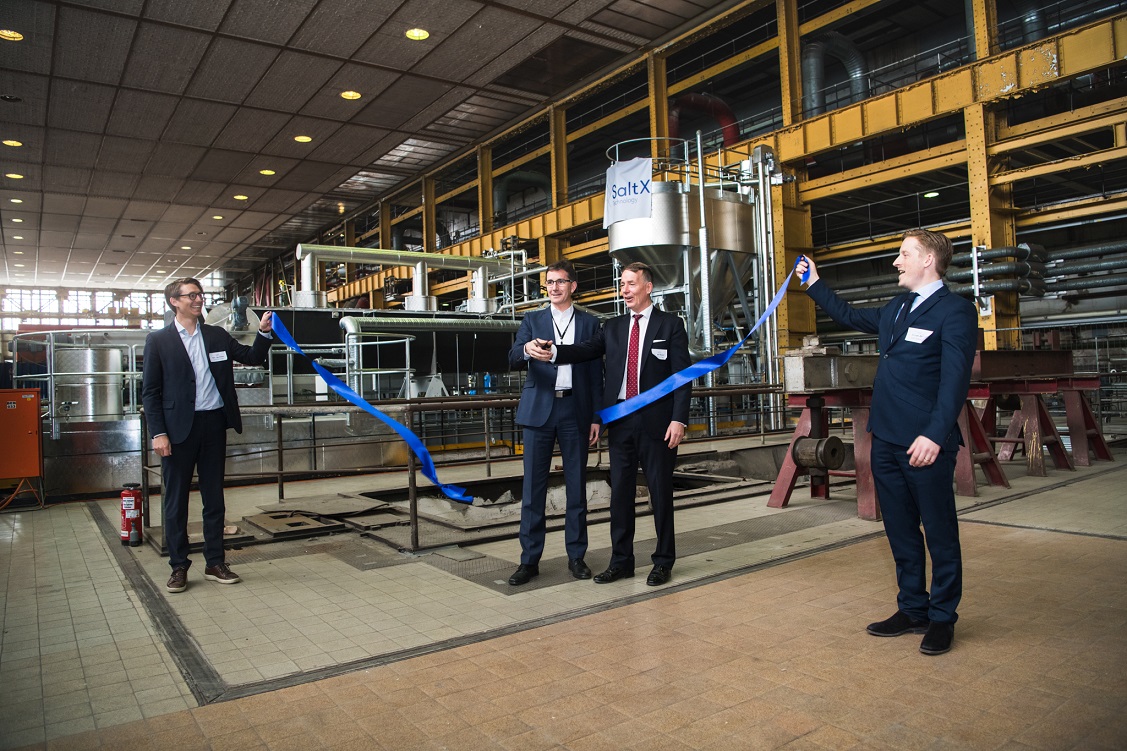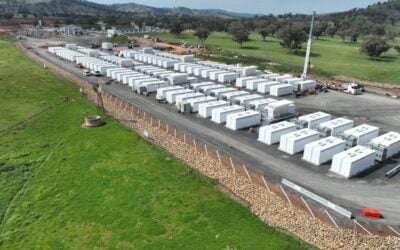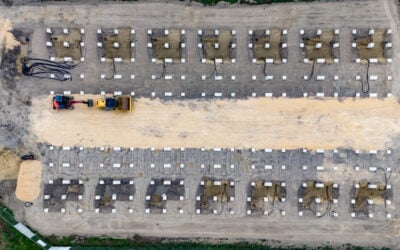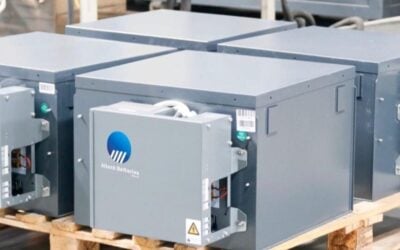
Electrical and heat storage using specially nanocoated salt (NCS) could be economically competitive with pumped hydro, SaltX has said, with a large-scale demonstration facility inaugurated in Berlin, Germany.
Headquartered in Sweden, SaltX has been “working with salts for 15 years”, the company’s marketing director Eric Jacobson told Energy-Storage.news today. This specific application for the salt-based energy storage technology has been in development since customers began expressing an interest in seeing it scaled up a couple of years ago, Jacobson said.
Last Thursday, SaltX and its project partner Vattenfall inaugurated the first 10MWh system based on the technology, in Spandau, Berlin. The pilot plant has an output of 0.5MW, Jacobson said, with energy utility Vattenfall installing the system at one of its combined heat and power (CHP) plants, Reuter-C.
“It’s been known for a while that you can store energy in salt, and there’s been two problems with doing that,” Jacobson said.
Try Premium for just $1
- Full premium access for the first month at only $1
- Converts to an annual rate after 30 days unless cancelled
- Cancel anytime during the trial period
Premium Benefits
- Expert industry analysis and interviews
- Digital access to PV Tech Power journal
- Exclusive event discounts
Or get the full Premium subscription right away
Or continue reading this article for free
“First, the salt is highly corrosive so the application itself has been really expensive because you need special material as the salt starts to corrode the metal and eventually it will be destroyed. Secondly, when you are discharging this thermal battery the salt content has agglomerated, started to lump together. So after 60 cycles you lose the properties of the salt and it starts to not be so efficient.”
Claiming to have solved this problem by applying a proprietary material – patented as far back as 2013 – as a nanocoating to salt crystals, which prevents this corrosion and the agglomeration, Jacobson said that it will require tanks of inexpensive metal to store the material, without the need for pressurisation inside. SaltX claims this will make the technology easier to scale up to larger and larger capacities of storage.
“We use a technology where, it’s similar to an engine and a fuel tank, so the salt is the fuel and it’s really easy to scale this tank up and then we have a reactor or engine where we can take out the energy or the power.
“Whether we want 10MWh or 100MWh of storage, that’s not a big deal for us. That’s one of our advantages.”
Local wind power becomes local power and heat
The pilot project is sited in a region with high penetration of wind energy on the grid. It charges with electricity from the grid and absorbs excess wind energy, while also outputting heat into the local district heating network.
With the system operating at 500 degrees, it can also output high-temperature steam commonly used in industrial processes. For maximum efficiency – claimed to be as high as 90% – the system outputs 30% of the stored energy as electrical power and the rest as heat, to be used either domestically or industrially.
Energy stored chemically in this way can retain its heat for “a day, week or even a year without losing the energy over time”, unlike water, which cools rapidly by comparison. Jacobson also claims the technology and level of engineering required to create scalable systems is superior to molten salt, which some others are investigating, or attempting to commercialise.
“We are really different [to molten salt] because they heat up salt and they keep their salt isolated. So that’s not a form of chemical storage, it’s a latent heat storage. Molten salt cannot go down in temperature below 200 degrees then the salt crystallises then the system will fail and they need to keep their system hot. We can go down to 0 degrees in temperature and restart the process where we were – so it’s really easy for us to start and stop the process.”
While SaltX had considered trying to make the electrical storage component a bigger part of the output equation, the company found that customers in China, Europe and Great Britain all said that partly due to planned coal power station retirements, ways of cheaply generating, storing and dispatching heat are desired.
SaltX seeks system developer, EPC partners
The Spandau project is a pre-commercial demonstrator, Eric Jacobson pointed out, and it will take “roughly three to four months” of operation for meaningful data to emerge. The next step will be to create a commercialised design for testing.
The company is currently looking for partners that will help them to do that. SaltX itself would like to stick to its core expertise in creating the salt and related materials, with an EPC and system developer partners to deliver the systems’ engines (or reactors), and to engineer, construct and build the complete systems for markets in Europe and in China.
Vattenfall is seeking solutions to help it play a role in the transition to decarbonised and decentralised energy and as such was “really kind in letting” SaltX trial its technology in Spandau, Jacobson said. Other partners in the pilot include French engineering consultancy ETIA and the Swedish Energy Agency.
The system can take one to five minutes to start up, making it not suitable for fast-response applications such as frequency control on the grid, whereas it could be a good fit for peak shifting, from one time of day to another, or even to the next day and so on. SaltX supplied some indications of the potential the company sees for the technology privately with Energy-Storage.news and although it is pre-commercial and as yet not possible to put a number on what completed, large-scale commercial systems might cost, Jacobson said that broadly speaking, SaltX wants to be “as price competitive as pumped hydro [energy storage]”.





